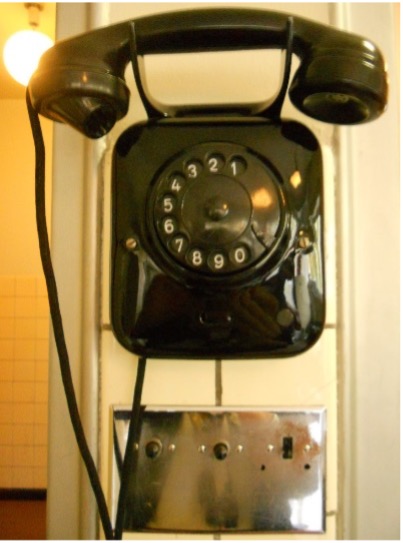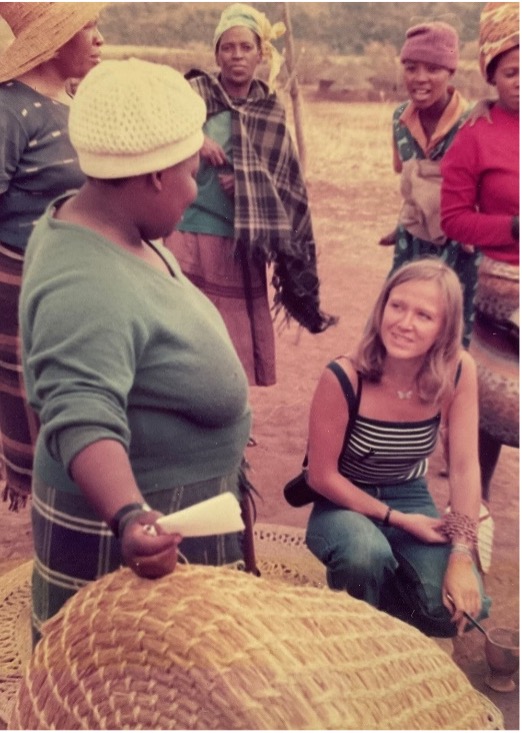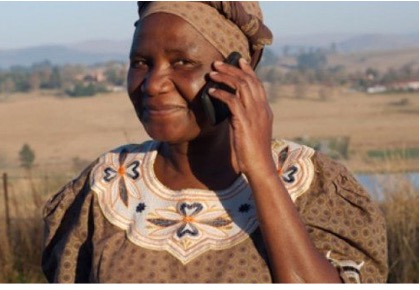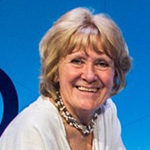Janice Hughes CBE
The communications industry has changed at an accelerating pace over the past three decades in terms of both technology and devices. The underlying culture of the sector has changed even more. Less often spoken about but equally important, women have played a fundamental and increasing role in changing the way that the companies operate and interact with their users. Women, after all, make up half of the customers, and in many parts of the world, they also run micro and small businesses using this technology. The shift in technology and culture in telecoms and mobile has in fact been greater than the shift from black and white television to colour and much greater than the move from analogue to digital.
As I reflect on my own career journey, I am struck by how dramatic this shift has been, as I leapt from working in aid and development in Africa from the late eighties into the heart of telecommunications deregulation and competition in Europe and Asia. I should also like to acknowledge the parallel evolution of the GTWN, following a chance meeting that I had with Candace Johnson, and a shared realisation of the role that women could play in this industry.
The pre-mobile era
In the mid-eighties I was working for the UN High Commission for Refugees during the famine in Ethiopia and the wars in the Congo. I worked from a tent, an office without glass windows and from a dilapidated vehicle. I worked for months on end, hundreds of miles from the nearest phone, light years away from the ever-present digital media of today. In those days we communicated internationally via telex and facsimile while in the home the hard-wired fixed phone resided in the hallway. telephone use was infrequent and expensive, and phone operators mostly worked for the Post Office. Telecommunications was run by civil servants, usually male engineers.
As government owned monopolies were replaced by duopolies, women were largely confined to supporting roles, including the scantily clad women gracing exhibitions at technology and telecoms exhibitions. In the UK, the newly created British Telecom experienced limited competition from its new rival, Mercury which was launched in 1981 in the City of London, offering corporate clients a (slightly) cheaper alternative to BT. Yet Mercury, far from being a new entrant, was part of the old international Post Office system, known as Cable & Wireless that was founded in 1869. C & W owned telephone operators across Africa, the Caribbean and Pacific Islands, and in the lucrative market of Hong Kong.
My telecom journey begins
I fell into telecommunications by chance from being the MD of the Economist’s Advisory Group and working closely on competition and pricing issues with Sir Bryan Carsberg, who became the first Director General of Oftel, the UK telecommunications regulator. The privatisation of British Telecom (BT) in 1984 and the formation of Oftel was an historic moment; the advent of competition in the telecoms sector thrust regulation into the limelight. Sir Bryan proposed that I specialise in telecoms and media, a great piece of personal advice and mentoring that I followed wholeheartedly.
Regulation and competition were at the heart of change and evolution in communications. In 1988, I worked on the Beesley/ Laidlaw IEA Review1, which judged that not enough had been done to maximise competition, nor to spur BT into greater efficiency. The inadequate framework that was set up then, lies at the root of why the UK today has one of the lowest gigabit fibre uptake rates of all the OECD countries, at just 20%. BT’s effective monopoly of the fixed copper network was never seriously challenged, nor was it pressed by Ofcom in later years to invest in full fibre.2
Promoting the benefits of competition
For many years fixed telecoms remained an engineering led culture where everything was about trying to keep the old system running rather than innovate and improve. I recall many meetings at BT as the only woman present in a room of 25 or more, where we discussed fixed managed systems for corporate clients and new satellite services. In sharp contrast today one at least sees several women even in the more technical meetings in most phone operators. In 1989 the global study I prepared for IBM on the benefits of competition in telecommunications, landed on the desk of the Economics Minister of Hong Kong, Anson Chan CBE, and former Chief Secretary to the Administration. She invited me to quantify the benefits that would accrue to the Territory from introducing competition and breaking the Cable & Wireless monopoly, which I estimated to run into billions of dollars. We then had to try to persuade the governing body, the Executive Committee, ExCo, to end the long-cherished pole position held by C & W, no easy task given its privileged incumbent position. I was alternately wined and dined and ostracised by government and business leaders for promoting competition. Change came however in the form of a new regulatory body, Ofta that I helped to set up, with multiple licences for new cable and telecoms operators.

Hong Kong became one of the most innovative and cheapest communications markets in the world.
The mobile revolution
It was while working in Hong Kong in the Post Office building on deregulation that I came to use the very first cellular phones. These phones were so large and heavy they were installed in a cradle in cars. We were at the dawn of the mobile revolution. It was to usher in hundreds of GSM, PCN and 2/3G licensees and a proliferation of new cellular devices. Some of the early minnows of the Mobile Age included the operators such as Racal-Vodafone, Hutchison, Orange, MTN, Telstra and Telenor in Norway, amongst many others who were real innovators and who gained momentum throughout the nineties.
Drivers of change
Two major developments led to the epic changes that have occurred over the past three decades. Firstly, the launch of GSM networks across Europe in France, Germany, and the UK. Racal Vodafone in 1991 targeted high-flying businessmen. At that time, I worked for John Carrington, CEO of Cable & Wireless on a project aptly named ‘Mobile 2000’. I was asked to forecast the growth of mobile devices for the UK from 1991 to 2000. My forecast of 2m mobile phone users in the UK by 2000 was met with surprise and disbelief. My expectations were vastly surpassed, as there were more than 12m new phones by the Millennium. We all underestimated the sheer growth and scale of the rapidly evolving mobile phone market.
The second critical feature of the mobile revolution was the launch of content services with the Wireless Application Protocol, WAP. Prior to that, mobile phones were restricted to calling and SMS texting. Nokia brought in the first WAP phones for browsing the internet, the 7110, in 1999, while the first camera phone, the Sharp J-SH04, only arrived in November 2000. Telecommunications changed exponentially however when Apple burst onto the market with the first iPhone in 2007. Now, it’s hard to imagine a world without cameras, gaming, social media, and all manner of content on a handset. Many doubted that people would use their phones for watching TV, sports and films, yet it is common practice today. Their superfast chips and microprocessors mean that they are often much faster at downloading a film without buffering and smartphones, like the canals and railways of former centuries, are rewriting history.3
Multichannel viewing
While the fixed telephone companies were slowly crawling out of the Dark Ages, television was entering into an enlightened moment of multichannel viewing delivered via cable and satellite. During the famous Wapping strike at News International in 1988, I was invited by Rupert Murdoch to advise which satellite he should adopt for delivering his growing strand of television channels in the UK. Without having met Candace at this point, I chose the SES Astra satellite. It was a far better option than PanAmSat or others in the queue. Astra founded by Candace was a transformative platform that changed the face of European broadcasting and long before we saw any convergence, it ushered in channel bundling and subscription television on a massive scale.
The changing culture of communications
It was not long after this that Candace and I properly got together to help bring more young women into telecommunications and link together those who were already there, through the creation of the GTWN. We are intertwined in the history of the industry, and we were bound together even before we met.
The culture within the mobile industry was different. Mobile phone companies were engaged in a struggle to lure new customers onto their networks. They had to have a much stronger marketing focus, not just an engineering one, and this is where women could find a more significant role, although they were still very much a minority and confined to the marketing and HR departments.
Sadly, the migration of women into leading positions in both fixed and mobile was still somewhat slower than the proliferation of new telecoms operators and hundreds of new mobile licensees. In the early nineties I only came across one female CEO of a fixed telecoms operator and that was the head of Telecom Argentina. A decade later in 2001 Carla Cico was the CEO of Brasil Telecom, in 2007 Sally Davies became the CEO of BT Wholesale and today amongst a few others we have Philisiwe Sibiya, CEO of MTN Cameroon and Rhonda Cook, President and CEO of PS Lightwave a fibre company she founded in 2010. Women were and still are woefully underrepresented in CEO and top leadership positions in the telecoms and mobile industries. Even today, we are only able to identify a handful of female group CEOs in places such as Scandinavia and Asia with Allison Kirkby at Telia and Chua Sock Koong former CEO of Singtel. With more than 800 mobile operators worldwide, gender parity is not even close at any level in the industry. I am delighted that the CEO of the fibre company that I have helped to create, Spring Fibre, is a woman, Rosalind Singleton.
Mobile technology has driven economic and social development
Ever since my aid work in Africa in the 1980s, I have tracked and promoted the adoption of mobile telecommunications, which has become a major driver of economic and social development, especially for women.
Over 80% of Africans now have cell phones, and the area of coverage is growing at a faster rate than any other region in the world. The growth in the uptake of mobile technology is helping to transform the commercial landscape, especially for women entrepreneurs who run their microbusinesses using their mobiles. Experts believe that by the year 2025, Africa’s iGDP, the measurement of the Internet’s contribution to overall gross domestic product (GDP), will grow from the 1.1% it is currently to at least 5% or 6%.
Content is king
All the talk at the Millennium was about convergence between media and telecoms, digital television and the rapid emergence of online services. People were demanding much faster connectivity and welcomed the growth and dominance of the new online media developed by the world’s largest tech groups: Amazon, Apple, Facebook, Google and YouTube, which transformed their social and working lives. The media playing field started tipping firmly against the traditional broadcasters, the cable and satellite multichannels and the mobile and telecoms operators that had become content players. Viewers opted in their tens of millions to download and watch the new and expensive TV series such as Game of Thrones, Fleabag and Breaking Bad and the big budget movies with subscription services, from the streamers such as Netflix, Disney, Amazon Prime, HBO and Apple TV.
Some of the global media groups had already merged with telecoms operators. They were caught off guard in this rapidly emerging streaming market. AT & T who acquired Time Warner for $85bn in 2018, then felt compelled to unwind the deal and offload $43bn of their content treasure trove into a separate business with Discovery. Fixed and mobile operators had spent billions bidding for films, TV series and sports rights in a bid to become content players, including AT & T, Rogers, Astro in Malaysia, Telefonica, Verizon and Vodafone. It was challenging for them to keep pace with the new content platforms and now some have reverted to their traditional mobile and wholesale businesses. This ‘content is king’ strategy brought more women into the communications operators as women were already running TV and film production companies. Will this trend now be reversed as many of the operators sweep back to their “pipes” and focus on delivery and distribution?
Perhaps the broadcasters and telecoms operators can be forgiven for not foreseeing Netflix’s astonishing strategic vision and determined execution in implementing their first £5bn plus content strategy. It’s hard today to recall that Netflix only started investing in original programming at any scale, in 2013. It is also a pity that many regulators were well behind the internet and digital wave, hindering the public service and commercial broadcasters from even adopting streaming and subscription services, while sidestepping regulation for the big tech groups. In the UK, the regulator actually ruled against the major broadcasters from setting up a joint streaming and subscription service, Project Kangaroo to compete against Netflix and Disney. How wrong they were.
It is strange how things go round in full circle. In the late nineties fixed telecoms seemed stranded while mobile grew exponentially. Then the mobile operators moved into a period of maturity with slower growth while broadband and fibre became the growth engine of the last ten years. Today it is a massive industry searching for the next growth vector and there are some 8 billion mobile phones worldwide with the mobile and telecoms sectors contributing more than $3tn to global GDP.4
Women leaders: from generation to generation
Mobile and telecoms operators are in yet another era of innovation and creativity, although it is tainted by uncertainty, fraud with internet crime on a massive scale, which represent real dangers for young people. Governments everywhere are embarking on a fundamental reset of their relationship with global tech players. How will this unfold and how will it affect the fixed and mobile operators? Australia is one of the first of many governments that are attempting to assert a measure of control over the new media platforms, by compelling the tech giants to reflect local needs and concerns, control egregiously harmful content and support healthy local media ecosystems. Ironically, all the things that public service broadcasting was originally set up to deliver.
While the convergent technologies have brought fantastic economic benefits to hundreds of millions of people in all corners of the earth, we still face many risks. As we race headlong into a dystopian world of AI and robotics, we risk being hard wired to a human neural network complete with subliminal submission to the supercomputers whose algorithms will be controlled by good and bad people, in equal measure. This could easily morph into a world that only a few people understand and control. In the same way that we have ignored climate change, until it is almost too late, we could equally sleepwalk into an uncontrolled digital crisis. Now more than ever we need to inject integrity, ethics and control over the platforms that perpetrate and promote extremism and the dissolution of democracy.
Since the early days of engineering led networks that were manned by men, we now find ourselves in a communications and technology web of interrelated industries that demand a broader set of cultural and social skills and people who can understand and unravel the complex extremes and chaos within our superfast gigabit world. Now more than ever, we need more women to step into senior positions across the board, mentor younger women and ensure that there is a changing culture of communications from generation to generation that also ensures social and racial justice, greater equality and a platform world that curbs the excesses of AI algorithms. The latter could take us down a road of no return with people being moved “to vote” or “to like” without knowing who or what has prompted them to do so. We need women to stand up and to lead us away from any negatives of the AI and digital forces that will otherwise drive us toward an undemocratic digital century.
1 ‘The Future of Telecommunications, An Assessment of the Role of Competition in UK Policy’, by Michael E. Beesley and Bruce Laidlaw, published by the Institute of Economic Affairs, 1989.
2 What’s the Point of Ofcom?’ Edited by John Mair and contributions from Rt.Hon Sir Alan Moses, Judge, Former Head Independent Press Standards Organisation, Steve Barnett, Professor of Communications, University of Westminster, Mark Thompson, Former BBC DG/New York Times CEO and Janice Hughes CBE, CEO of Graphite Strategy and Founder and Director of Spring Fibre.
3 e-Britannia: the communications revolution published by the Luton Press 2000.
4 IDC expects the global telecoms market to exceed USD2tn in 2022
Janice Hughes CBE is a Founding Board Member of the Global Telecom Women’s Network, a Founder Director of a new gigabit fibre network company and a Founder Director of Graphite Strategy. She has had a front row seat at the creation and development of the UK’s independent regulators Oftel and Ofcom. She was MD of the Economists Advisory Group, managing a pre-eminent group of academics including Sir Bryan Carsberg, who then moved to become the first Director General of Oftel, the precursor to Ofcom. She then became a specialist consultant to the telecoms and media sectors, first at CSP, then as lead Partner heading Booz Allen & Hamilton’s European Telecoms practice, before founding Spectrum Strategy Consultants and growing it to over 100 consultants in nine countries around the world. She played a leading role within the DCMS’s Creative Industries Taskforce alongside Paul Smith, Lord Puttnam and Richard Branson, undertaking the first ever statistical review that demonstrated that the sector was worth more than £100bn, not far behind that of the financial services sector. In 2018 the DCMS announced that these creative sectors were now worth £268bn. She is Chair of Space for Giants a charity focused on conservation, wildlife protection, biodiversity and carbon offsets in perpetuity across Africa and is the new Co-Chair of the cross-party Independent Commission on UK-EU Relations.











